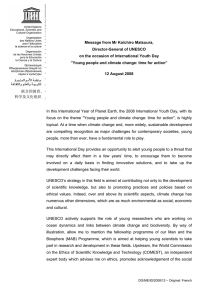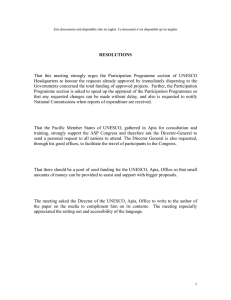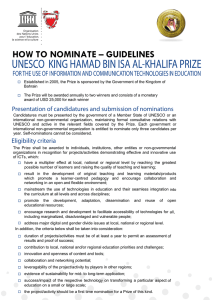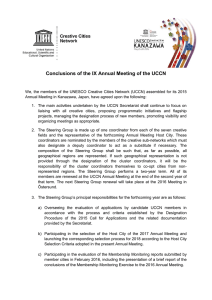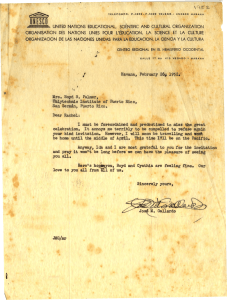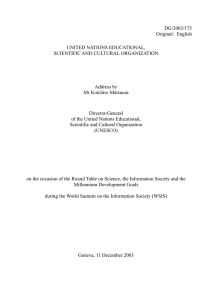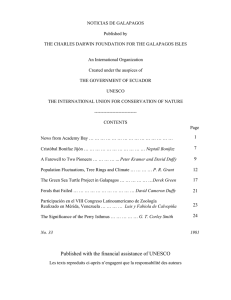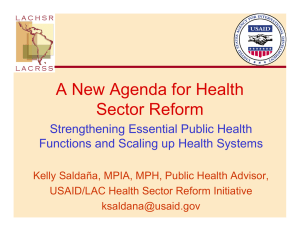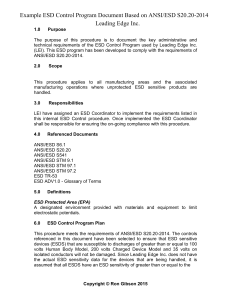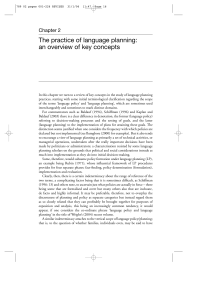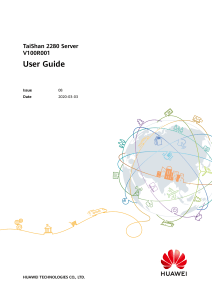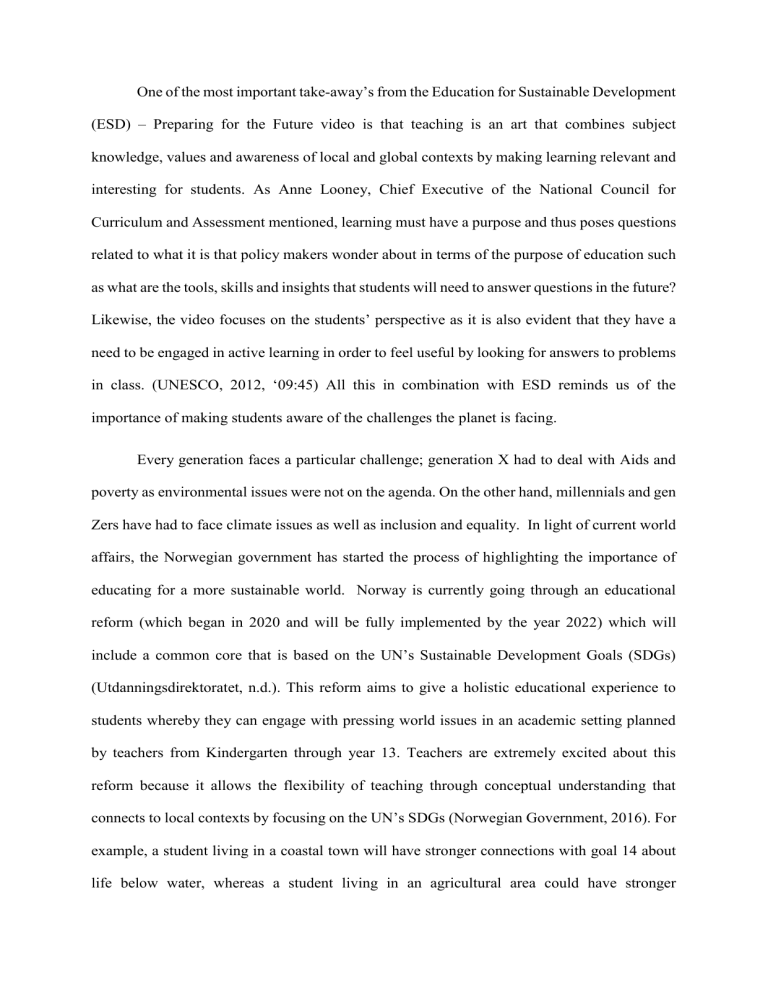
One of the most important take-away’s from the Education for Sustainable Development (ESD) – Preparing for the Future video is that teaching is an art that combines subject knowledge, values and awareness of local and global contexts by making learning relevant and interesting for students. As Anne Looney, Chief Executive of the National Council for Curriculum and Assessment mentioned, learning must have a purpose and thus poses questions related to what it is that policy makers wonder about in terms of the purpose of education such as what are the tools, skills and insights that students will need to answer questions in the future? Likewise, the video focuses on the students’ perspective as it is also evident that they have a need to be engaged in active learning in order to feel useful by looking for answers to problems in class. (UNESCO, 2012, ‘09:45) All this in combination with ESD reminds us of the importance of making students aware of the challenges the planet is facing. Every generation faces a particular challenge; generation X had to deal with Aids and poverty as environmental issues were not on the agenda. On the other hand, millennials and gen Zers have had to face climate issues as well as inclusion and equality. In light of current world affairs, the Norwegian government has started the process of highlighting the importance of educating for a more sustainable world. Norway is currently going through an educational reform (which began in 2020 and will be fully implemented by the year 2022) which will include a common core that is based on the UN’s Sustainable Development Goals (SDGs) (Utdanningsdirektoratet, n.d.). This reform aims to give a holistic educational experience to students whereby they can engage with pressing world issues in an academic setting planned by teachers from Kindergarten through year 13. Teachers are extremely excited about this reform because it allows the flexibility of teaching through conceptual understanding that connects to local contexts by focusing on the UN’s SDGs (Norwegian Government, 2016). For example, a student living in a coastal town will have stronger connections with goal 14 about life below water, whereas a student living in an agricultural area could have stronger connections with goal 15 about life on land. However, for both students, the issue of clean water and sanitation, that is, goal 6, will be of equal importance. Now, for a teacher, no matter the year level, planning for the school year, it will be necessary to include the Sustainable Development Goals as part of the educational reform, thus demonstrating how curricular studies is not a stagnant field and has an enormous potential to offer wide opportunities of expansion. Consequently, planning must consider the inquiry-based approach to ensure student engagement. Though Norway is making efforts to train teacher for the new educational reform, the efforts are minimal, and training is voluntary. This means that some teachers may not understand the purpose behind the educational reform, thus doing a disservice to the students. It is imperative that policy makers come to the realization that, in order to properly implement a reform of this magnitude, systems must be in place for equal training opportunities for everyone. References Norwegian Government. (2016, July 05). Government.no. Norway's follow-up of Agenda 2030 and the Sustainable Development Goals: https://www.regjeringen.no/en/dokumenter/follow-up-sdg2/id2507 UNESCO. (2012). Unesco.org. Education or Sustainable Development (ESD) - Preparing for the Future. https://www.unesco.org/archives/multimedia/document-2588 Utdanningsdirektoratet. (n.d.). Utdanningsdirektoratetnettside. Core Curriculum: Democracy and participation: https://www.udir.no/lk20/overordnet-del/opplaringens-verdigrunnlag/1.6demokrati-og-medvirknin

